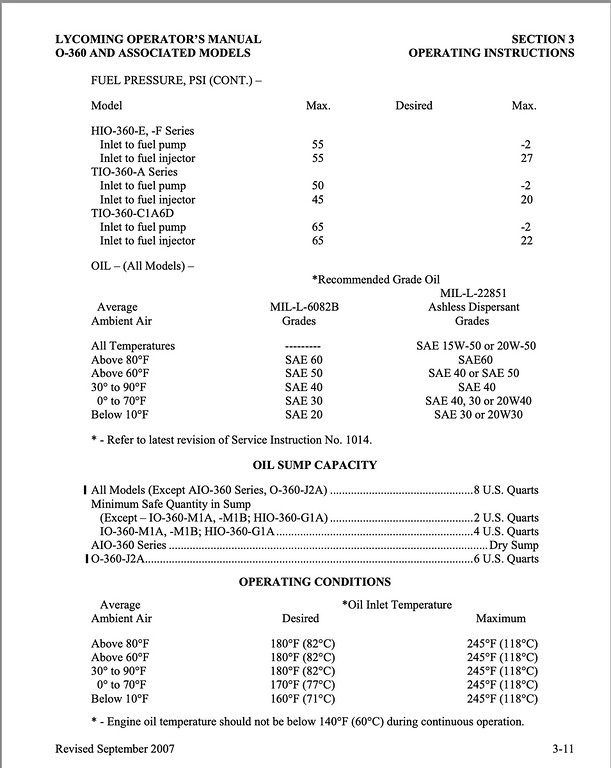I recently bought a 2019 RV-14A with the 210 HP YIO390 with 325 TTE. While keeping the stick between 5-6 qts, it is burning a quart every 3.6 to 4 hours.

Many of the 20 hrs that I’ve flown in the past 2 weeks are practice instrument approaches with about 15 MAP for about 8 miles. Then 25x25 in the climb and 23x23 in the 10 mile cruise back to the IAF, then repeat 1/2 dozen times.
On a 3-1/2 hr flight this weekend at roughly 23x23, she seemed to burn closer to 5hrs per qt.
The 2nd owner died in his PA-46 in December. His widow does not know how much oil he was adding to his RV-14A.
The log shows it broke-in with Aeroshell 100 mineral oil for 10 hours, then switched to Phillips XC 20-50 until 250 hrs when it started running Aeroshell W-100. Last month, 305 TTE, compressions were 1) 78/80, 2) 78/80, 3) 78/80, 4) 77/80. FWIW, cyl 4 does go LOP dirst, but they all go LOP within .5 GPH.
My 2014 RV7 had an Aerosport Power O-375 with 100 hrs, that burned a quart every 4 hours until I had Lycon diamond hone the nikasil-plated bores and replace the pistons & rings. The builder had babied the engine since day-1. He also babied an RV-9 that he built and it used a lot of oil.
I broke in the new cross-hatches in with no warm-up, a short taxi, then firewalled her for the first hour, then varied between 75%-65% power for the 2nd hour, then kept the power in the 65%-95% range for another 8 hours. By the 10 hour mark, it was burning at a rate of 1QT every 10 hours, so I sold her with a clear conscience.
I had a 2007 RV-7A, and for the past 2 years (170 hrs) have had my 2019 RV8. Both of these RV’s had Superior IO360’s. They both use a quart about every 9-11 hours if I top them up to 6qts, and a lot quicker if I over-fill. When I had the crank replaced (under AD) last year, Lycon bored my eight .010” and installed 10.5:1 pistons, ported the heads and Aladyne-dipped the heads. I broke it in just like the Aerosport 0-375 in my RV7. I’m happy to report that with these mods and one Surefly mag, top sreed went from 181 KTAS to 190 KTAS. Oil consumption is 1 qt every 10 hours with 70 hours on the top end.
So, my question on the YIO390 is: considering that it has great compressions, will do 174 KTAS fire-walled (and leaned to about 12-13 GPH) at 4500 MSL, oil temps are maybe 170, and CHT’s are 330ish (lower than my Superior IO 360’s and a lot lower than the Aerosport Power O-375).
There is barely any residue on the belly in the 20 hours that I’ve flown it, and no wet black ash in the tailpipe, but it does drip pregnant drop of oil on the breather tip when I land.
Question: should I have the cyls honed and/or bored .010” over, (and look into higher comp pistons and porting), then break her in hard, or should I just “run it”?






